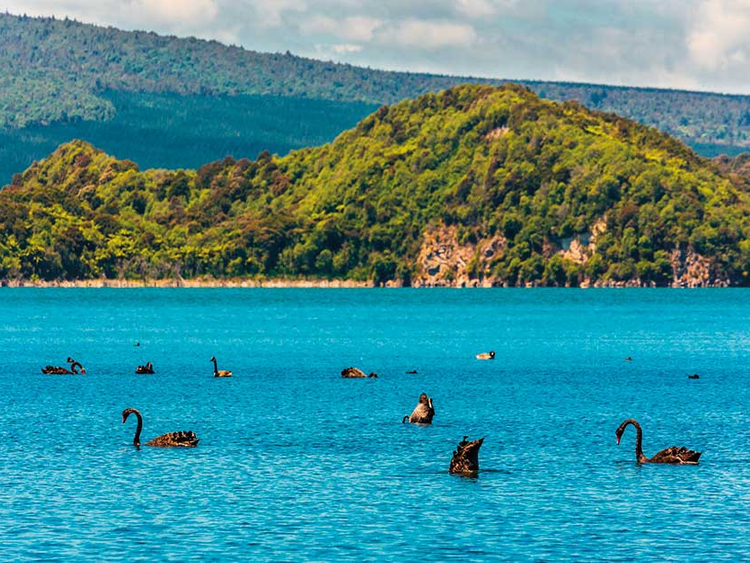Dunedin: The eighth natural wonder of the world may have been rediscovered 131 years after it was buried by a volcanic eruption, New Zealand researchers believe.
In the mid-1800s, the pink and white terraces of Lake Rotomahana in the North Island attracted tourists from around the globe. The terraces — dramatic cascading pools descending into the lake’s temperate waters — were lost in an eruption of Mount Tarawera in 1886.
Two researchers believe they have pinpointed the location where the terraces may lie preserved 10-15 metres below the surface, under layers of mud and ash, and they say a full archaeological survey is needed to excavate the site.
“They [the terraces] became the greatest tourist attraction in the southern hemisphere and the British Empire and shiploads of tourists made the dangerous visit down from the UK and Europe and America to see them,” said Rex Bunn, one of the researchers.
“But they were never surveyed by the government of the time, so there was no record of their latitude or longitude.”
Bunn and Dr Sascha Nolden believe the terraces were not destroyed or pushed to the bottom of the lake as earlier research has suggested but are buried on the foreshore of the lake. They used the field diaries of a German-Austrian geologist, Ferdinand von Hochstetter, which contain a detailed description of the terraces’ location before the 1886 eruption, to establish their likely resting place.
“Our research relied on the only survey ever made of that part of New Zealand, and therefore we are confident the cartography is sound,” said Bunn. “Hochstetter was a very competent cartographer.”
Since the pair’s research paper was published this month in the Journal of the Royal Society of New Zealand, Bunn said he had received daily offers of help to conduct an survey, and he was in the process of assembling a “team of the willing” to begin exploring the site once the first funding goal of NZ$70,000 (Dh186,838; £40,000) was met.
“We want to undertake this work in the public interest. And I have been closely liaising with the ancestral owners of the land, the Tuhourangi Tribal Authority, and they are supportive and delighted with the work,” he said.
Bunn believes the terraces could be in reasonable condition, potentially with minimal damage, and could be restored to their former glory once excavated.
This is not the first time researchers have claimed to have discovered the lost terraces. In 2011, scientists using an unmanned submarine said they had found remnants of the pink terraces on the floor of the lake, buried by silt and debris.
Last year GNS Science New Zealand said that after five years of research, a team of New Zealand and international scientists had come to the “inescapable conclusion” that most of the terraces had been destroyed by the eruption.
Bunn said he was in discussion with GNS but and he believed its conclusions were based on 130 years of inaccurate cartographical information.













